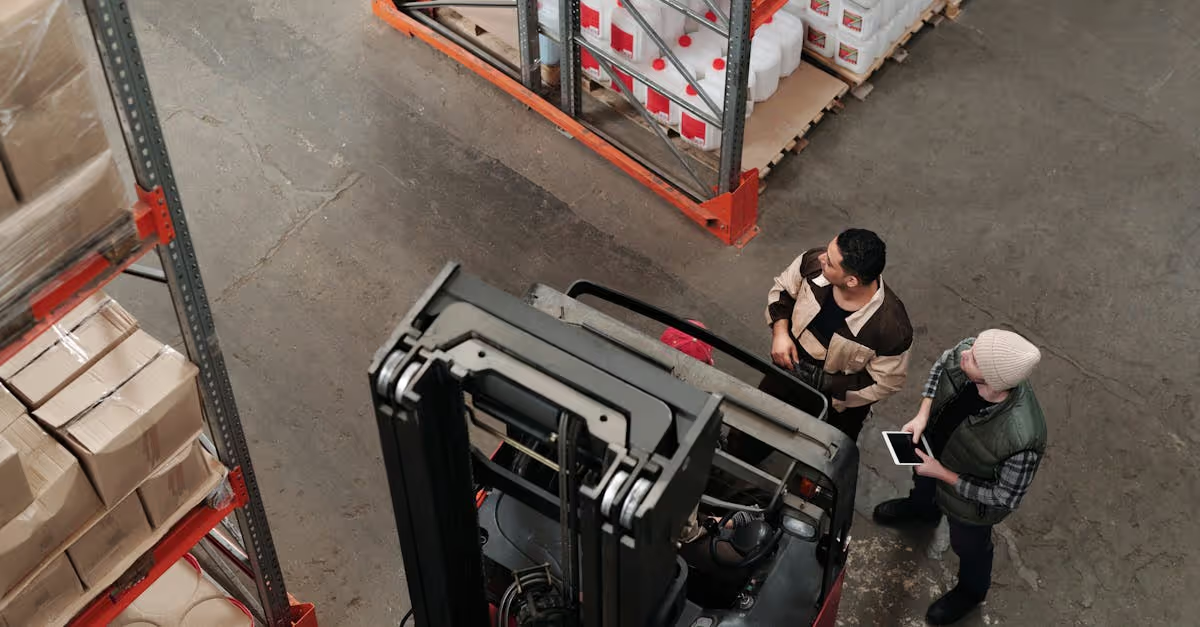Key Takeaways
- Importance of Safe Storage: Proper storage of pool chemicals reduces the risk of accidents and injuries, which are reported to cause over 5,000 emergency room visits in the U.S. annually.
- Organizational Efficiency: Organizing pool chemicals not only promotes safety but also streamlines pool maintenance, making it easier and quicker to locate necessary items.
- Chemical Compatibility: Understanding and storing chemicals separately—like chlorine and pH balancers—prevents dangerous reactions and maintains safe handling practices.
- Safety Precautions: Always use protective gear when handling pool chemicals and ensure first aid measures are in place to respond to potential accidents effectively.
- Regular Maintenance Checks: Conduct monthly inventory checks to verify the freshness of chemicals, inspect for damage, and ensure proper storage conditions to maintain safety.
- Effective Storage Solutions: Use durable, clearly labeled, and appropriate containers to prevent mixing chemicals, and create a designated, well-ventilated storage space away from direct sunlight.
When it comes to maintaining our pools, proper storage of chemicals is crucial. Did you know that over 5,000 emergency room visits each year in the U.S. are related to pool chemical injuries? That's a staggering number that highlights the importance of safe handling and organization.
In this guide, we’ll explore effective storage solutions that not only keep our pool area tidy but also ensure safety for our families and pets. From understanding chemical compatibility to utilizing the right containers, we'll cover essential tips that make managing pool chemicals a breeze. Let’s dive into the best practices for keeping our pool chemicals safe and organized.
Importance of Proper Storage Solutions for Pool Chemicals
Proper storage of pool chemicals plays a crucial role in safety and efficiency. We focus on implementing effective storage solutions that help protect families and pets while maintaining a clean pool area. Understanding the significance of safe storage can significantly minimize risks associated with pool chemical handling.
Benefits of Safe Storage
Safe storage of pool chemicals prevents accidents that could lead to injuries or property damage. We can reduce risks by using dedicated containers, clearly labeled with contents and precautions. The U.S. reports over 5,000 emergency room visits each year linked to pool chemical mishaps. Proper organization decreases these incidents by promoting awareness and cautious handling.
Using compatible containers allows for cleaner maintenance routines. Storing chemicals securely ensures we don’t mix incompatible substances, which could result in dangerous reactions. Investing in a designated storage area fosters accountability, making it less likely that children or pets will access hazardous materials. When everyone in our household understands the importance of safe practices, we create a safer environment for all.
Impact on Pool Maintenance
Effective storage solutions streamline pool maintenance. We can save time and effort by organizing chemicals efficiently. Instead of rummaging through a cluttered space, finding the right chemical becomes straightforward when everything’s stored properly. Using simple organization methods, like grouping by type or function, enhances our workflow.
Scheduled maintenance becomes easier when storage areas are tidy. We can prepare for our weekly pool cleanings with the right tools and chemicals at hand. Implementing clear labeling systems simplifies this process—no more guesswork or accidental oversights. Our pools remain cleaner, clearer, and safer, proving that organized storage truly benefits maintenance practices.
Types of Pool Chemicals
Pool chemicals play a vital role in maintaining clean and safe water. Understanding the main types helps us handle them properly and store them safely.
Chlorine and Shock Treatments
Chlorine acts as the primary disinfectant, keeping our pools free from harmful bacteria and algae. It's available in various forms, including tablets, granules, and liquid. Shock treatments provide an extra boost, breaking down contaminants and combined chlorine, ensuring sparkling water. For example, we should apply shock treatments after heavy pool use or heavy rainfall.
Safety considerations are critical when working with chlorine and shock. Always store these chemicals in cool, dry places away from direct sunlight. Using suitable, clearly labeled containers prevents dangerous mix-ups. Our community’s safety benefits from knowing that combining chlorine with other chemicals, like acid or algaecide, can lead to dangerous reactions. Have we adequately discussed why safety is a priority during handling?
pH Balancers and Algaecides
pH balancers, like acid and alkalinity increasers, keep pool water at optimum acidity levels, typically between 7.2 and 7.8. Maintaining proper pH levels protects pool equipment and ensures swimmer comfort. Algaecides prevent and treat algae growth, essential for clear water. We apply algaecides at the first signs of green slime or cloudiness.
Storing these treatments safely is equally crucial. Our storage should isolate pH balancers from other chemicals to prevent unwanted reactions. Using secure, labeled containers guards against accidental spills. Don’t forget to check expiry dates; expired chemicals can lead to ineffective treatments. How often do we inspect our stock for freshness?
By understanding the essential types of pool chemicals, we build a strong foundation for safe and effective pool maintenance.
Safety Considerations
Safety is paramount when handling pool chemicals. Understanding how to manage these substances prevents accidents and promotes a secure environment for our families and pets.
Handling and Usage Guidelines
We recommend using pool chemicals according to the manufacturer's instructions. Mixing different chemicals can result in hazardous reactions. Store each type in its appropriate container, and never transfer chemicals into unlabeled or non-original containers. Most importantly, check for compatibility to prevent dangerous situations. For instance, always store chlorine separately from other chemical types to avoid harmful gas release. Also, during storage or application, keep the area well-ventilated. If we stick to these guidelines, we minimize the risk of unexpected incidents.
Protective Equipment and First Aid
Protecting ourselves while handling pool chemicals is essential. Wear gloves, goggles, and a face mask. This gear acts as a barrier against spills, splashes, and inhalation. We should always have a first aid kit accessible and familiar with how to respond to chemical spills. In case of an accident, the first step is to ensure fresh air enters the area. If we experience skin or eye contact, rinse immediately with plenty of water and seek medical advice. Familiarizing ourselves with these safety measures creates a more secure environment while managing pool upkeep. We contribute to a safer community by sharing knowledge and staying vigilant.
Organization Tips for Storage
Effective organization of pool chemicals enhances safety and simplifies pool maintenance. We can follow two key guidelines to achieve a tidy and safe storage solution.
Choosing the Right Storage Containers
Selecting suitable containers for pool chemicals is crucial. We recommend using clearly labeled, durable plastic bins. Plastic is less prone to breaking compared to glass and is resistant to chemical reactions. Containers should have secure lids to minimize leaks and exposure.
For example, use separate bins for chlorine tablets, algaecides, and shock treatments to prevent accidental mixing. Using color-coded labels makes it easy for us to grab the right item without confusion. Remember, keeping each chemical safely stored cuts down the risk of accidents.
Creating an Efficient Storage Space
Creating an efficient storage area means designating a cool, dry spot away from direct sunlight. Ideally, the space should be well-ventilated, which reduces the chances of harmful fumes. A well-organized shelf or cabinet keeps everything at hand.
We can install a pegboard for hanging tools and supplies. This approach frees up shelf space and keeps items visible. Grouping items by use means we’ll have shock treatments next to our skimmer nets and cleaning brushes.
Imagine trying to find your favorite floatie only to stumble upon an unopened bag of algaecide instead. Not a great swim day! By putting every item in its place, we streamline our process. Plus, we help each other by sharing our innovations—what storage solutions work best for us?
Best Practices for Storage Maintenance
Maintaining a safe environment for pool chemicals requires diligence and regular attention. Following best practices minimizes risks and promotes organization.
Regular Inventory Check
Conducting regular inventory checks keeps track of pool chemicals. We recommend checking supplies at least once a month. Listing each chemical by name and quantity can help. It’s a good time to verify expiration dates. Keeping chemicals in the original containers fosters safety. Checking on storage conditions, like temperature and humidity, is essential too. If we spot any signs of damage, such as rust or leaks, it’s best to handle those quickly. Finding the right app to assist with managing our inventory, like service business software, can streamline the process. Whether you're checking chlorine levels or pH balancers, staying proactive saves us time and hassle.
Signs of Chemical Degradation
Identifying signs of chemical degradation can prevent mishaps. We should look for changes in color, texture, or smell. Any clumping or unusual odors signal it might be time to replace a chemical. If a container appears swollen or damaged, that’s a red flag. Chemicals lose potency over time, impacting pool water quality. Observing performance during regular maintenance can help identify problems. Have we ever opened a container only to be met with a strange smell? It's like that mystery meat in the back of the fridge, best avoided. Keeping a sharp eye on our chemicals, and relying on our technician management tools could simplify this task. Regular checks ensure we maintain a safe, enjoyable swimming environment.
Conclusion
Proper storage of pool chemicals is vital for our safety and the well-being of our families. By implementing the right organization strategies and adhering to safety guidelines, we can significantly reduce the risk of accidents and ensure a clean and enjoyable swimming environment.
Let’s commit to using clearly labeled containers and maintaining a tidy storage area. Regular inventory checks and awareness of chemical compatibility will help us stay on top of our pool maintenance.
With a proactive approach to storage and safety, we can create a secure atmosphere for everyone while enjoying the benefits of a well-maintained pool.
Frequently Asked Questions
Why is proper storage of pool chemicals important?
Proper storage of pool chemicals is crucial to prevent accidents and injuries. Each year, over 5,000 emergency room visits in the U.S. are related to these incidents. By storing chemicals correctly, you can reduce the risk of dangerous reactions and ensure safety for families and pets.
What are the best practices for pool chemical storage?
Best practices include using clearly labeled, durable containers, storing chemicals in a cool, dry place, and regularly checking for expiration dates. It’s also important to keep incompatible chemicals separated to avoid hazardous reactions.
How should I organize my pool chemicals?
Organize pool chemicals by grouping them based on use. Use shelves or pegboards for easy access, and implement color-coded labels for quick identification. This organization simplifies maintenance and reduces the risk of accidents.
What protective equipment should I use when handling pool chemicals?
When handling pool chemicals, always wear protective gear such as gloves, goggles, and face masks. This equipment helps safeguard against spills and inhalation, ensuring your safety during pool maintenance.
How often should I check my pool chemicals?
It is recommended to check your pool chemicals at least once a month. During these checks, verify expiration dates and inspect for signs of degradation, like changes in color or smell, to maintain effective water quality.





